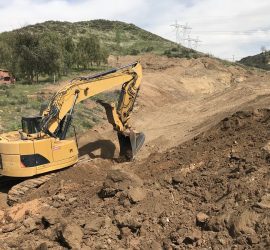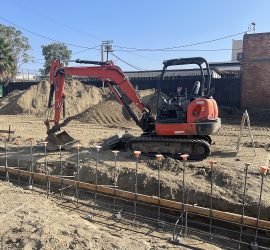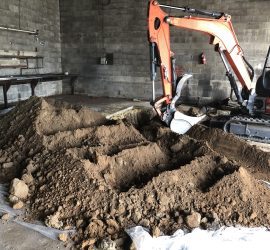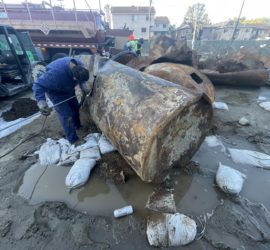Contaminated Soil Removal and Remediation
Contaminated soil removal and remediation is a common and practical environmental clean-up method for construction sites with ample space. When site conditions permit the use of large excavating equipment, and the extent of soil contamination is relatively shallow, geologists replace the pollution area with clean backfill. Contaminated soil remediation by removal is one of the many remedial action methods and options today. This approach tends to be most optimal when the chemicals of concern are thicker oils or heavy metals, and where the digging volume is relatively small. For example, a vacant field with an oil spill area spanning 30-feet by 10-feet by 5-feet. However, soil contamination removal methods are not effective where shallow groundwater contamination is apparent. Updated November 29, 2023.
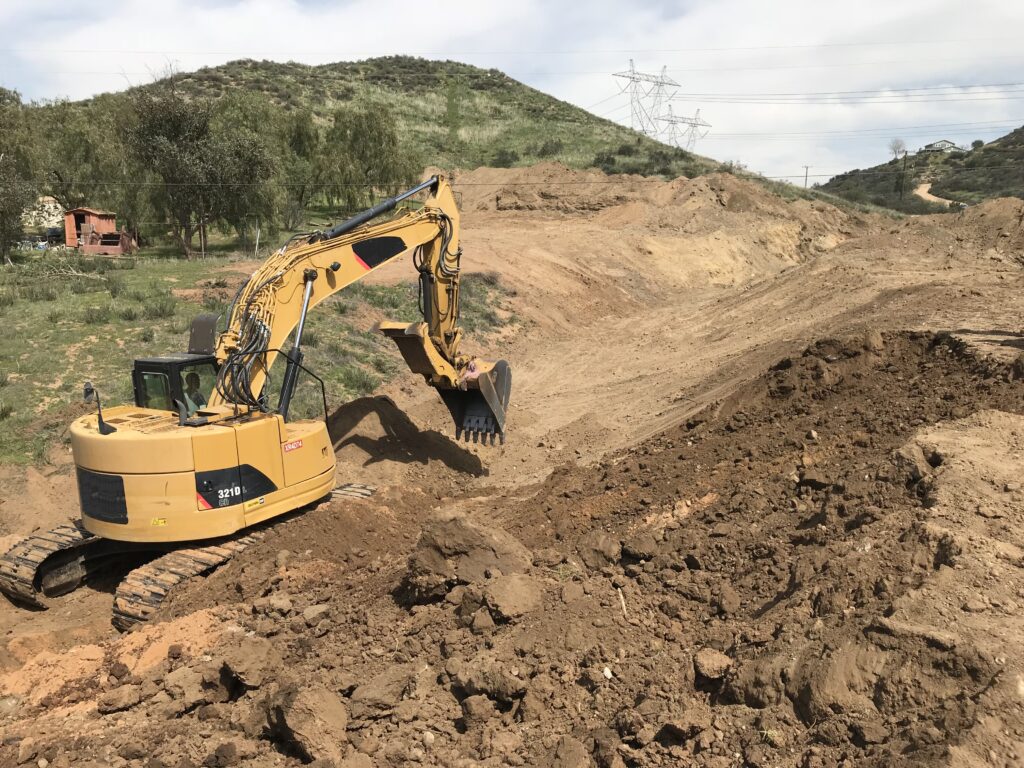
Environmental Site Assessments Before Contaminated Soil Removal
During the environmental site assessment phase of work, engineers and geologists perform soil contamination testing to formulate the lateral and vertical extent of the pollution. This information aims to determine the most applicable method for remediation at the property. Judging by the extent, chemicals of concern, and potential for migration, a final determination is made as to whether excavation methodologies are optimal.
Defining the Lateral & Vertical Extent of Contamination
The complete lateral and vertical extent of a contamination plume is a prerequisite of the contaminated soil removal and remediation process. This information sets the boundaries for the dig area. The data comes to light from a series of subsurface investigations, including but not limited to a Phase 2 Subsurface Investigation. In fact, a Phase I ESA or Phase II ESA report rarely provides enough data to fully define the extent of the soil contamination removal. Instead, it serves as a limiting investigation to determine if any contamination exists at all. Typically, additional site characterizations may be a requirement for remediation in the furtherance of a Phase II ESA report.
Excavation for Contaminated Soil Remediation
An excavation is any human-resulting cut, cavity, trench, or depression into the ground surface by removal of earth material. Contaminated soil removal can resolve multiple issues at once. For instance, a subterranean garage proposal within a shallow soil contamination plume is an efficient plot to clean up and develop a property at the same time. In fact, removing soil contamination from the subsurface eliminates the source of toxic substances. And this accomplishment is a preventative measure to safeguard future occupants from carcinogen exposure. For instance, an in-place leaking underground storage tank (UST) abandonment project during the excavation of a subterranean garage removes potential chemicals of concern as well.
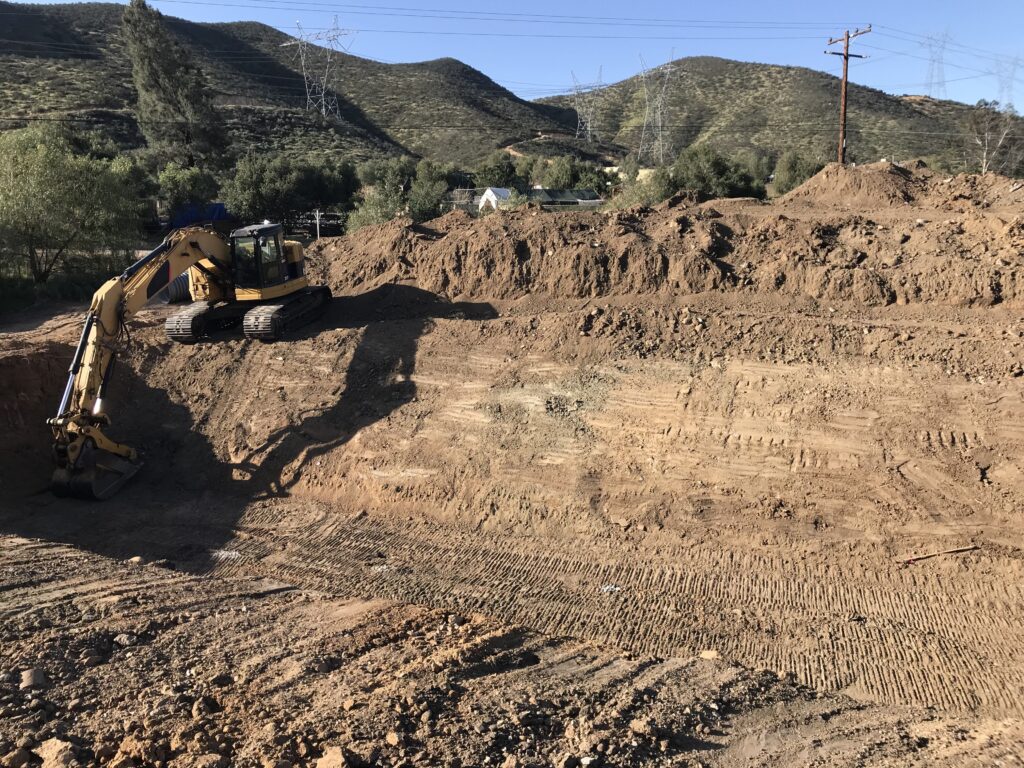

Typical Depths
Contaminated soil remediation by removal is generally feasible, to a certain extent. If the plume area is too widespread or too deep, contaminated soil removal may be too costly to accomplish. Typically, the vertical limitation for soil contamination removal projects ranges between 15 and 20 feet below the ground surface. And in some cases, deeper depths may prove to be worthwhile. However, if the extent of soil contamination is deeper than 20 feet, excavation methods are usually not the most feasible option for remedial action.
When Groundwater is Contaminated
Soil contamination removal methods are not a viable option for groundwater contamination remediation. The results of prior environmental site assessments likely provide insight as to whether groundwater contamination exists or not. Additionally, site-specific groundwater depths are likely to be reported to regulatory agencies. Moreover, when contaminated soil removal projects encounter the groundwater table, local health departments generally require additional permits. Consequently, additional mitigation measures (and costs) will be necessary. For example, groundwater pumping and treatment; slurry-walling of the contamination area, groundwater sampling, and more.
Confirmation Sampling
Equally important to the soil contamination removal work is the confirmation sampling. During the excavation, additional confirmation soil sampling is necessary to verify the completion of source removal. This is a mandatory step in the remedial action process. In most cases, a regulatory agency will ask to review the results of confirmation sample laboratory data. For instance, when dealing with leaking septic tanks, base soil and groundwater sampling are required immediately upon tank extraction.
Building & Grading Department Regulations
In California, grading and excavation projects must comply with the safety codes and regulations of the Division of Occupational Safety and Health (DOSH). Cal/OSHA and the California Building Code (CBC) Appendix J, provide guidelines on performing excavations with proper lateral support and safety procedures. Additionally, a Rule 1166 Air Quality Monitoring Permit via the Air Quality Management District (AQMD) is necessary to ensure the well-being of the nearby residents. If the Subject Site is a Brownfields Site under State Waterboard Cleanup Program, additional measures will be required to ensure all appropriate permits are obtained. Alternatively, a Soils Management Plan, by environmental engineering professionals can itemize these responsibilities with an emphasis on environmental construction health and safety.
Hazardous Waste Disposal Qualifications
In any contaminated soil removal project, the on-site field personnel must have the appropriate hazardous waste operations certifications. Soil contamination spoil transportation also requires special licensing. Similarly, all disposal centers require government registration and generator documentation. Additionally, there is a professional requirement for geotechnical engineers to test and certify the proper compaction of the back-filling materials.
Waste Disposal
The final stages of contaminated soil excavation include the legal transfer, disposal, and treatment of the spoils. As a result, there is a requirement to document the generation of the spoils through an EPA Identification code. Additionally, a waste transportation manifest and disposal profile are necessary for site closure.
Consultation
Geo Forward is an industry leader in soil contamination removal and grading projects for contaminated soil contamination. The team has all the necessary licensing and decades of experience with the various methods and applications. Geo Forward performs work with an emphasis on budgets, scheduling, and most importantly, the safeguarding of on-site personnel as well as occupants.

